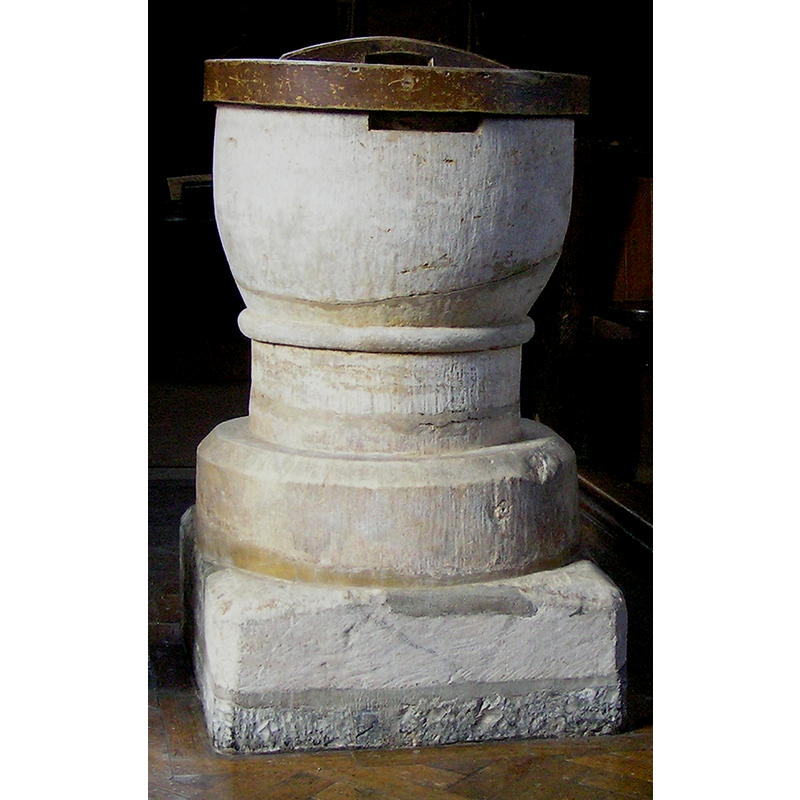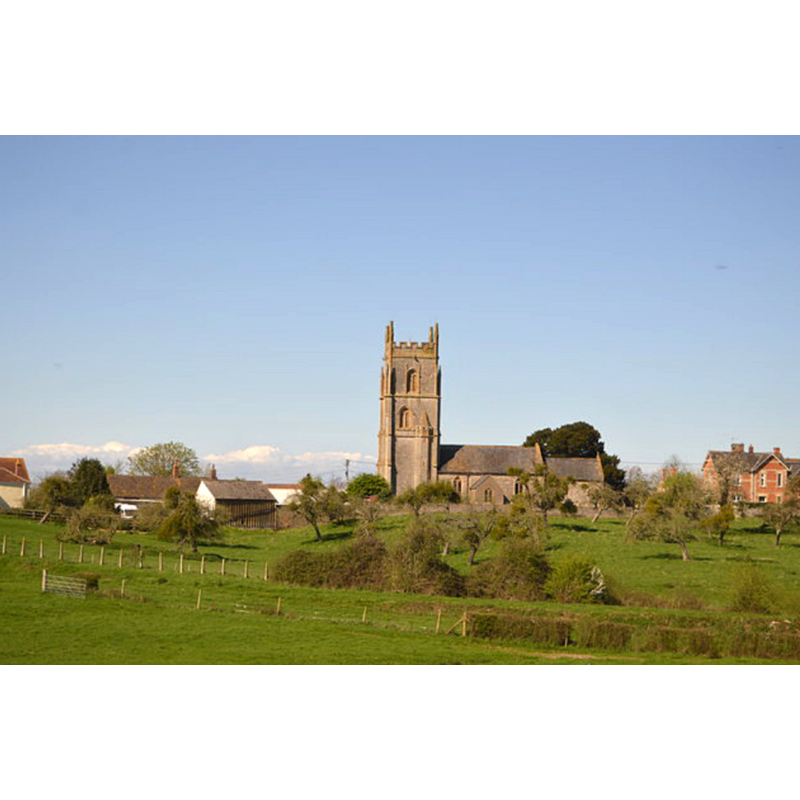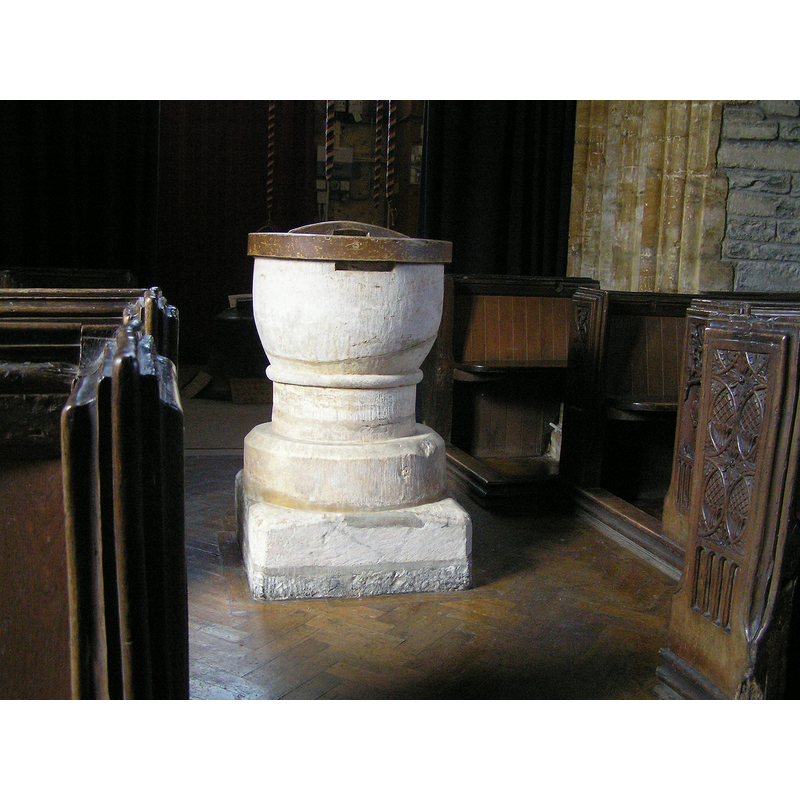Lyng nr. Taunton / East Lyng / Lege / Lenge / Luey

Image copyright © Tony Ethridge, 2009
Standing permission
Results: 4 records
design element - motifs - roll moulding
view of church exterior in context - south view
view of font and cover
INFORMATION
FontID: 13451LYN
Object Type: Baptismal Font1
Church/Chapel: Parish Church of St. Bartholomew
Church Patron Saints: St. Bartholomew
Church Location: Main Road, Lyng, TA3 5AU Somerset, UK
Country Name: England
Location: Somerset, South West
Directions to Site: Located of (S) the A361, 11 km ENE of Taunton
Ecclesiastic Region: Diocese of Bath & Wells
Historical Region: Hundred of Andersfield -- Hundred of North Petherton [in Domesday]
Font Location in Church: Inside the church, at the W end of the nave
Century and Period: 12th century, Late Norman
Credit and Acknowledgements: We are grateful to Tony Ethridge, of Somerset Villages, for his photograph of this font
Font Notes:
Click to view
There is an entry for this Lyng [variamt spelling] in the Domesday survey [http://opendomesday.org/place/ST3328/lyng/] [accessed 3 April 2018], but there is no mention of cleric or church in it although the place was in the lordship of the abbey of Athelney. Jeboult (1873) writes: "The font is exceedingly rude, and looks very ancient." Wade & Wade (1929) report a "tub font" in this church. The entry for this parish in the Victoria County History (Somerset, vol. 6, 1992) notes: "Lyng church, standing on the defences of the Saxon burh of East Lyng, [...] was described as a chapel in 1291, [...] presumably dependent upon the monastic church of Athelney [...] The plain font is of the 12th century". The entry for this church in the CRSBI (2018) notes: "The only Romanesque feature is the plain font [...] Located at the W end of the nave, in the central aisle, forward of the tower arch, a Norman tub, in hamstone or similar, although the superficial whiteness may be evidence of it having been painted at some time. The bowl is supported on a shallow cylindrical stem, and this on a base with a plinth below. The bowl is of the usual tub form. There is a strong torus roll running round the rim. The lead lining reaches across nearly half the rim. There is evidence of lock fittings on the W and E sides of the rim. Also in the rim, on the N side, there is a repair from some other fitting. The surface is vertically tooled, and the internal sides curve slightly at their base into the usual dished bottom. The stem is a relatively shallow cylinder apparently in two blocks, and between stem and bowl is a narrow roll. The base of the font is basically circular but has been cut back almost flush to the stem on the W side. The top of the base is chamfered but there is a substantial shelf between the top of the chamfer & the bottom of the stem of the font. The plinth underneath the font is a substantial block apparently of blue lias in two levels, but the extension to the W (for the priest’s platform) conforms in height with the lower of the two levels. The surface of the W extension has been neatly tooled with a broad instrument. The top surface of the main block has been worn or roughly chamfered in parts." The font consists of a plain tub-shaped basin that is badly cracked/broken through at the botom, raised on a cylindrical stem that has a roll moulding at the top, and circular lower base chamfered at the top; there is a quadrangular lower volume serving as plinth. The wooden cover is round and plain, with a long wooden handle. Not mentioned in Pevsner (1958).
COORDINATES
Church Latitude & Longitude Decimal: 51.05464, -2.95446
Church Latitude & Longitude DMS: 51° 3′ 16.7″ N, 2° 57′ 16.06″ W
UTM: 30U 503192 5655902
MEDIUM AND MEASUREMENTS
Material: stone
Font Shape: tub-shaped (mounted)
Basin Interior Shape: round
Basin Exterior Shape: round
Rim Thickness: 8.5 cm [calculated]
Diameter (inside rim): 48 cm*
Diameter (includes rim): 65 cm*
Basin Depth: 28 cm*
Basin Total Height: 43 cm*
Height of Base: 20 cm*
Font Height (with Plinth): 107 cm * [plinth = 16 cm*]
Notes on Measurements: * CRSBI (2016)
LID INFORMATION
Material: wood
Apparatus: no
Notes: [cf. FontNotes]
REFERENCES
Victoria County History [online], University of London, 1993-. Accessed: 2008-03-26 00:00:00. URL: https://www.british-history.ac.uk.
Corpus of Romanesque Sculpture in Britain and Ireland, The Corpus of Romanesque Sculpture in Britain and Ireland, The Corpus of Romanesque Sculpture in Britain and Ireland. Accessed: 2018-04-03 00:00:00. URL: http://www.crsbi.ac.uk.
Jeboult, Edward, A General Account of West Somerset, description of the Valley of the Tone, and the history of the twon of Taunton, Taunton: Somerset and Bristol Steam-press, 1873
Wade, G.H., Somerset, London: Methurn & Co., 1929

